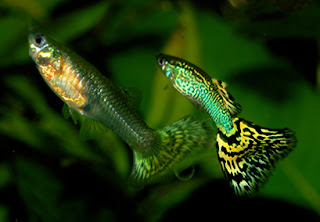The transition of Stem Cells (SC) from emergence to utter-prominence on the therapeutic-horizon has been phenomenal. While the promise of cell-based therapeutics has been there, applications of pluripotent SC’s for treatment of human patients have largely been under a cloud of controversy and doubt. While there are several, few doubts are glaring. One among those is the possible immunological-rejection of SC’s by the patient (since they are derived from other humans, grafted SC’s are viewed as allografts or non-self by the immune system). There were few attempts to overcome this impediment, not necessarily with the right moral-code, though (read Hwang et al., Science).
This virtual blind-end was resuscitated recently by the work of Yamanaka et al. and others, who found out a way to, well, at least theoretically, get around the immunological-rejection problem.
They made pluripotent cells from adult human skin, and named them induced-pluripotent-stem-cells (iPSCs). To cut a very-long story short, Yamanaka’s group dumped the original (and vastly controversial) method of pluripotent stem-cell derivation from human-embryos, and generated pluripotent cells from adult skin cells instead, by a method of cellular reprogramming (de-differentiation) [1]. Everybody rejoiced. This was no mean achievement, in terms of both the science behind it and the effort. This was the holy-grail of cell-based therapeutics, good news for both patients and the therapeutic-industry. This study was hailed, since it was reasoned that, at least theoretically, iPSCs by virtue of their origin from the patient’s own cells, would be recognized as ‘self’ and hence would not be mauled by the patient’s immune system, and hence could be a safe bet for cell-based therapies like cell-transfers, organ-grafts etc. This was followed by a series of iPS-cell derivations, from mice as well as humans [2,3,4].
All was fine, until this ‘letter’ in Nature spoiled the party. It was shown by a group from University of California (UC), San Diego (SD), that the underlying assumption that iPSCs would be immunologically tolerated was incorrect [5]. They showed that iPSCs, notwithstanding the reason of immune-tolerance, were actually actively repelled by the body’s defenses. Immunologist Yang Xu of UCSD and his colleagues tested what happened to several kinds of pluripotent cells when they were transplanted into genetically matched mice. Inbred mouse strains are the genetic equivalent of identical twins, and they can serve as organ donors for each other without any immune suppression. The researchers used two popular inbred strains, called B6 and 129, for their experiments.
Results:
When the researchers implanted ES cells from a B6 mouse embryo into a B6 mouse, it formed a typical growth, called a teratoma, which is a mixture of differentiating cell types (Teratoma formation is a standard test of pluripotency for ES and iPS cells). ES cells from a 129 mouse, on the other hand, were unable to form teratomas in B6 mice because the animals’ immune systems attacked the cells, which they recognized as foreign.
The researchers then implanted iPS cells made from B6 mouse cells into B6 mice. To their surprise, many of the cells failed to form teratomas at all-similar to what the researchers saw when they transplanted ES cells from one mouse strain to another.
The teratomas that did grow were soon attacked by the recipient’s immune system and were rejected, which is the same as that triggered by organ transplant between individuals.
The immune reaction was less severe when the researchers used iPS cells made with a newer technique. The new method ensures that the added genes that trigger reprogramming turn off after they’ve done their job. But the reaction didn’t go away completely. The researchers showed that the iPS cell teratomas expressed high levels of certain genes that could trigger immune cells to attack. That is probably due to incomplete reprogramming that leaves some genes misexpressed, Xu says.
Discussion: what next.
> The team used two different methods to make the iPS cells, and they showed slightly different propensities to trigger immune rejection, so it may be that reprogramming methods can be fine-tuned to avoid the problem altogether.
References:
[1] Takahashi, K. & Yamanaka, S. Induction of pluripotent stem cells from mouse embryonic and adult fibroblast cultures by defined factors. Cell 126, 663–676 (2006).
[2] Takahashi, K. et al. Induction of pluripotent stem cells from adult human fibroblasts by defined factors. Cell 131, 861–872 (2007).
[3] Yu, J. et al. Induced pluripotent stem cell lines derived from human somatic cells. Science 318, 1917–1920 (2007).
[4] Park, I.-H. et al. Reprogramming of human somatic cells to pluripotency with defined factors. Nature 451, 141–146 (2008).
[5] Tongbiao Zhao, Zhen-Ning Zhang, Zhili Rong & Yang Xu. Immunogenicity of induced pluripotent stem cells. Nature, doi:10.1038/nature10135
Evidence of a Pluripotent Human Embryonic Stem Cell Line Derived from a Cloned Blastocyst. Woo Suk Hwang et al. Science 2004: 303; 1669-1674






